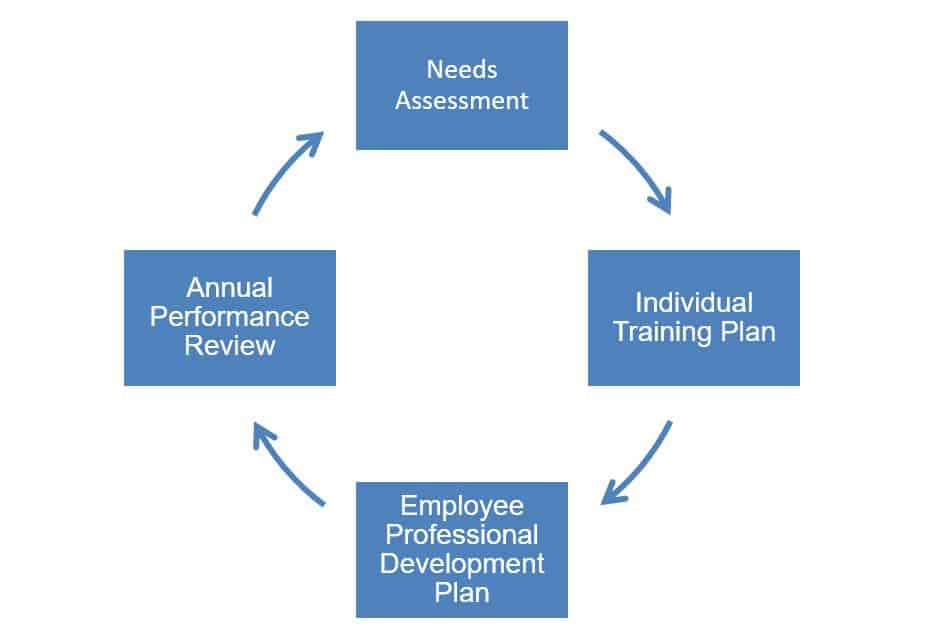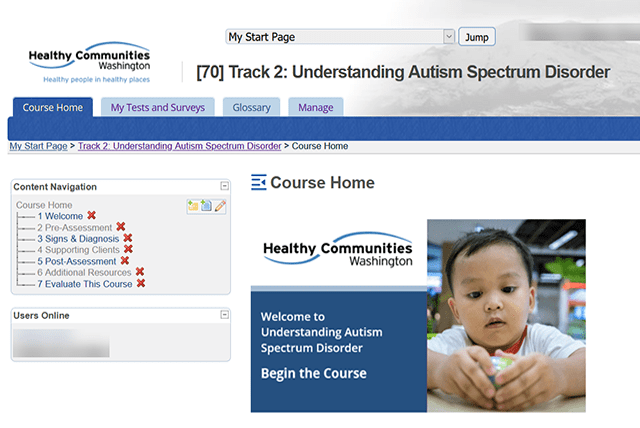Making sure everyone in your team gets the right training can be hard when they all have different jobs. But if you create an annual training plan for each person, it’s easier to keep track of who needs what training, and everyone knows what they have to do.
Benefits of a Training Plan
Having a plan is helpful for you, your internal staff and your training team, because it will keep you organized and on track. It’s also helpful for participants in your program.
Better performance – Training boosts the knowledge and ability of your staff, and an annual plan will help you stay on track to deliver training on a regular schedule.
Less turnover – Training is one of the biggest reasons someone might come to work for you. Continual training is a strong motivator for an employee to keep working for you.
Efficient time and resource management – An organized plan means you will need to spend less time and money organizing training. The framework is there for you to follow, so you can trust the system rather than scrambling to meet requirements or needs when you’re not prepared.
If you create an annual training plan, then you can include requirements that come up year after year (e.g., HIPAA compliance) and also have a pathway for introducing new topics to keep building the skills of your team.
Every training plan should match the requirements for the people you want to train. But generally speaking, these steps will have you on your way to an effective learning program that makes your staff and your program better, year after year.
Creating An Annual Training Plan in 4 Steps
1. Consult Your Training Needs Assessment
The first step in starting an annual training plan for your program is to look at the training needs assessment to see what your team needs to know.
Finding out what your stakeholders need from a program and what your employees need to learn will make sure that everything fits together and supports your ultimate goals.
For example, imagine you run an HIV/AIDS program and the main goal of your program is to reduce the number of new HIV infections annually. Work backwards from there to come up with skills your team needs to know so you can deliver that to your trainees. This kind of team probably need to know the basics of what HIV/AIDS is, how it affects your community, prevention and treatment, and outreach and communication skills.
You might also want to include additional factors such as:
- Overall agency goals or vision statement
- The skills included in job descriptions
- Compliance requirements, such as those for sexual harassment, HIPAA or patient rights
2. Decide Who Needs an Annual Training Plan
Assume you’ve identified what your audience needs to learn. Next, figure out who needs to learn these skills.
Some people will be obvious, such as the people directly working on your program. And others are less obvious, such as other support staff or community partners.
Think about the HIV program example above. If you ran this program, you might need to include in your plan:
- Yourself, as well as other managers and coordinators from partner programs
- Case managers
- Patient navigators
- Outreach workers
- Nurses
- Nonprofit community partners
- Members of a multidisciplinary team
You can group stakeholders with your infrastructure, because they will also have requirements you’ll need to address, such as the ability to become self-supporting with your new courses.
3. Optimize for Training Your Adult Learners
Keep adult learners engaged and help them retain what they learn by exposing them to the right kind of training materials. Some people define the word “training” very broadly, from a semester of college classes to a single PDF.
Keep adult learning principles in mind, and your staff will perform much better. Adult learning is relevant to the job, career and personal goals, task-oriented, interactive and usually self-directed.
Look at your training plan as a way to capture what works and repeat it in future offerings. It’s a great idea to store the training materials in various formats to appeal to people who learn best in different ways. Some examples:
- Written process documents especially used exactly when needed. An example would be a protocol for intakes on the phone, which is kept by the phone.
- Screenshots of video captures of processes, live presentations, or demonstrations by in-house or outsourced experts.
- Hosted e-learning that’s available on demand. A learning management system (LMS) makes it easy to standardize training for everyone and is at hand whenever new hires need it or when veterans need an update. An LMS is a platform that you can use to deliver, track, and report on your training efforts.
- Hands-on experience to bring the theory of training into practice. Give your staff the opportunity and chance to work on their new skills, and assign mentors and coaches to answer questions and provide guidance.
4. Connect All Parts of the Process
The point of creating an annual training plan is to work it into a repeatable cycle that supports overall goals. Here’s a structure that fits many agencies:

Start with the needs assessment or competency assessment to identify gaps to be filled with training.
Then find the areas for improvement and build those onto the employee’s individual training plan for their job.
That will go into an employee’s overall professional development plan, a chart for that person’s career at your agency.
Every year, check progress against these plans in an annual performance review. Doing so will allow you to identify focus areas for the coming year.
By building structure into your annual training plan for the year, you’ll get results and be ready for many years to come.



